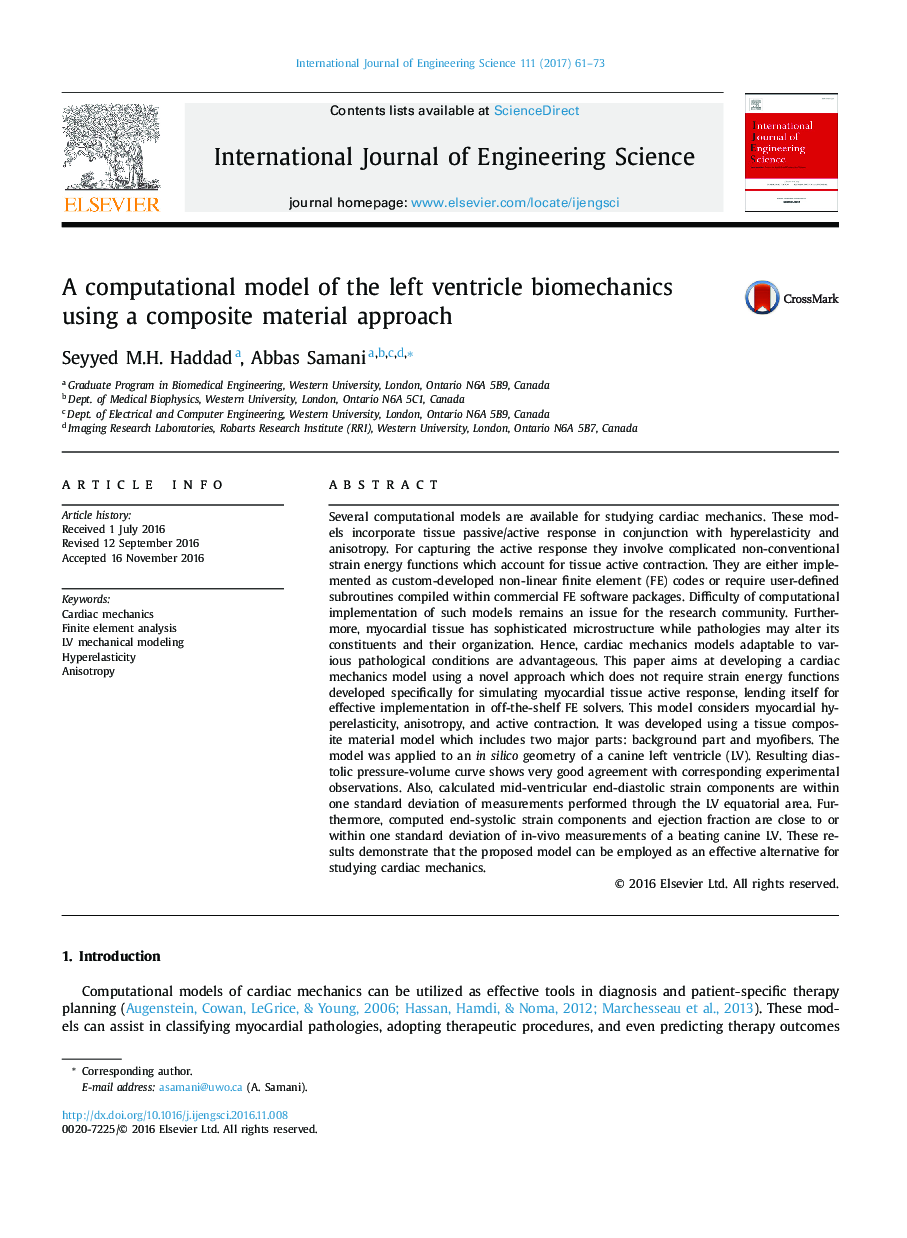| کد مقاله | کد نشریه | سال انتشار | مقاله انگلیسی | نسخه تمام متن |
|---|---|---|---|---|
| 5022772 | 1469959 | 2017 | 13 صفحه PDF | دانلود رایگان |
عنوان انگلیسی مقاله ISI
A computational model of the left ventricle biomechanics using a composite material approach
ترجمه فارسی عنوان
یک مدل محاسباتی بیومکانیک بطن چپ با استفاده از رویکرد مواد کامپوزیتی
دانلود مقاله + سفارش ترجمه
دانلود مقاله ISI انگلیسی
رایگان برای ایرانیان
کلمات کلیدی
موضوعات مرتبط
مهندسی و علوم پایه
سایر رشته های مهندسی
مهندسی (عمومی)
چکیده انگلیسی
Several computational models are available for studying cardiac mechanics. These models incorporate tissue passive/active response in conjunction with hyperelasticity and anisotropy. For capturing the active response they involve complicated non-conventional strain energy functions which account for tissue active contraction. They are either implemented as custom-developed non-linear finite element (FE) codes or require user-defined subroutines compiled within commercial FE software packages. Difficulty of computational implementation of such models remains an issue for the research community. Furthermore, myocardial tissue has sophisticated microstructure while pathologies may alter its constituents and their organization. Hence, cardiac mechanics models adaptable to various pathological conditions are advantageous. This paper aims at developing a cardiac mechanics model using a novel approach which does not require strain energy functions developed specifically for simulating myocardial tissue active response, lending itself for effective implementation in off-the-shelf FE solvers. This model considers myocardial hyperelasticity, anisotropy, and active contraction. It was developed using a tissue composite material model which includes two major parts: background part and myofibers. The model was applied to an in silico geometry of a canine left ventricle (LV). Resulting diastolic pressure-volume curve shows very good agreement with corresponding experimental observations. Also, calculated mid-ventricular end-diastolic strain components are within one standard deviation of measurements performed through the LV equatorial area. Furthermore, computed end-systolic strain components and ejection fraction are close to or within one standard deviation of in-vivo measurements of a beating canine LV. These results demonstrate that the proposed model can be employed as an effective alternative for studying cardiac mechanics.
ناشر
Database: Elsevier - ScienceDirect (ساینس دایرکت)
Journal: International Journal of Engineering Science - Volume 111, February 2017, Pages 61-73
Journal: International Journal of Engineering Science - Volume 111, February 2017, Pages 61-73
نویسندگان
Seyyed M.H. Haddad, Abbas Samani,
